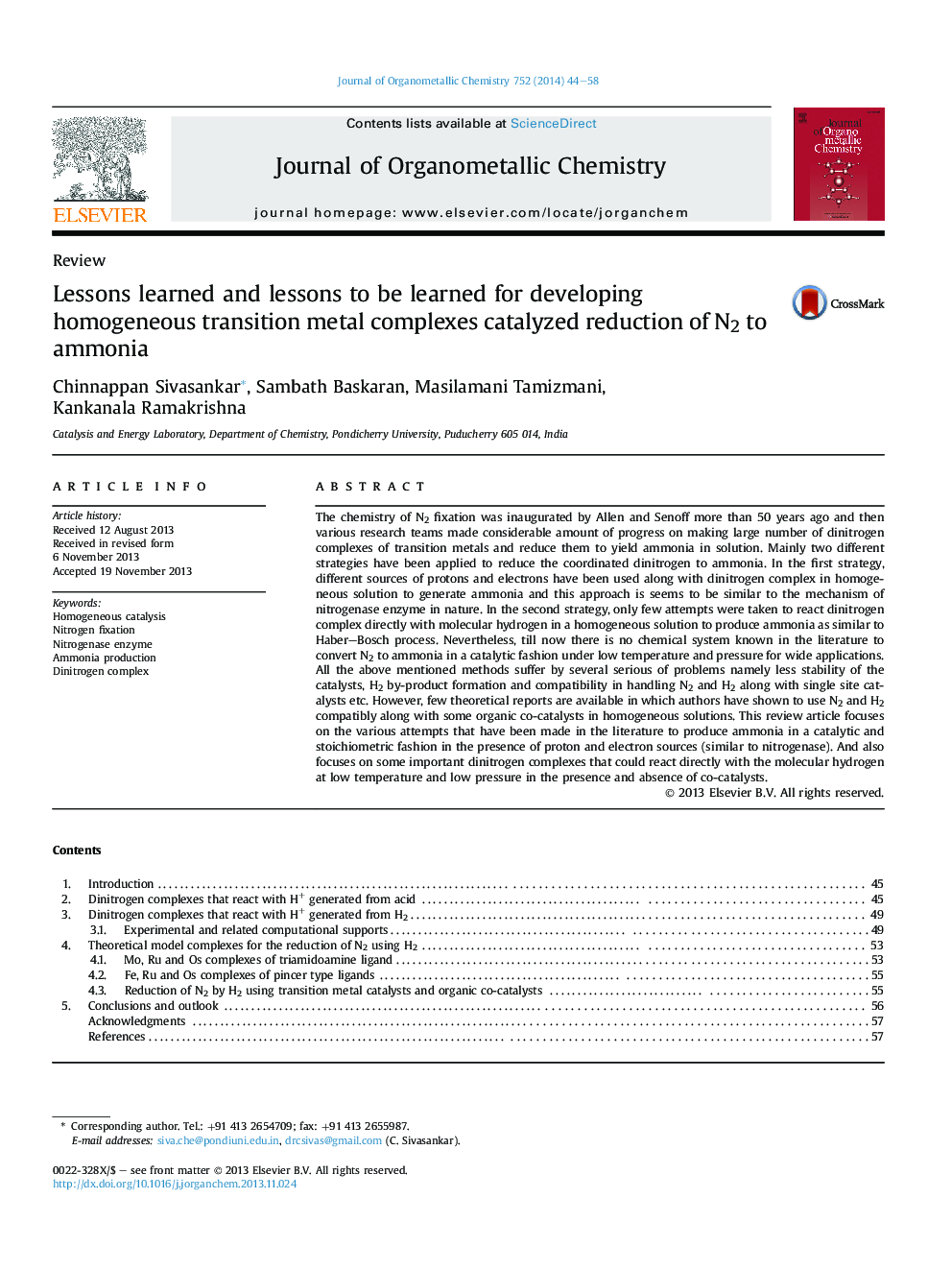| کد مقاله | کد نشریه | سال انتشار | مقاله انگلیسی | نسخه تمام متن |
|---|---|---|---|---|
| 1321262 | 1499888 | 2014 | 15 صفحه PDF | دانلود رایگان |

• Importance of ammonia synthesis is discussed.
• Two different approaches have been reviewed and discussed.
• Some important catalysts have been discussed.
• New challenging methods for NH3 synthesis have been discussed.
The chemistry of N2 fixation was inaugurated by Allen and Senoff more than 50 years ago and then various research teams made considerable amount of progress on making large number of dinitrogen complexes of transition metals and reduce them to yield ammonia in solution. Mainly two different strategies have been applied to reduce the coordinated dinitrogen to ammonia. In the first strategy, different sources of protons and electrons have been used along with dinitrogen complex in homogeneous solution to generate ammonia and this approach is seems to be similar to the mechanism of nitrogenase enzyme in nature. In the second strategy, only few attempts were taken to react dinitrogen complex directly with molecular hydrogen in a homogeneous solution to produce ammonia as similar to Haber–Bosch process. Nevertheless, till now there is no chemical system known in the literature to convert N2 to ammonia in a catalytic fashion under low temperature and pressure for wide applications. All the above mentioned methods suffer by several serious of problems namely less stability of the catalysts, H2 by-product formation and compatibility in handling N2 and H2 along with single site catalysts etc. However, few theoretical reports are available in which authors have shown to use N2 and H2 compatibly along with some organic co-catalysts in homogeneous solutions. This review article focuses on the various attempts that have been made in the literature to produce ammonia in a catalytic and stoichiometric fashion in the presence of proton and electron sources (similar to nitrogenase). And also focuses on some important dinitrogen complexes that could react directly with the molecular hydrogen at low temperature and low pressure in the presence and absence of co-catalysts.
Lessons learned about various attempts so far made to produce ammonia in the presence of proton and electron sources and some important dinitrogen complexes that could react directly with the molecular hydrogen under viable reaction conditions, and also some lessons to be learned for the future developments have been discussed.Figure optionsDownload as PowerPoint slide
Journal: Journal of Organometallic Chemistry - Volume 752, 15 February 2014, Pages 44–58